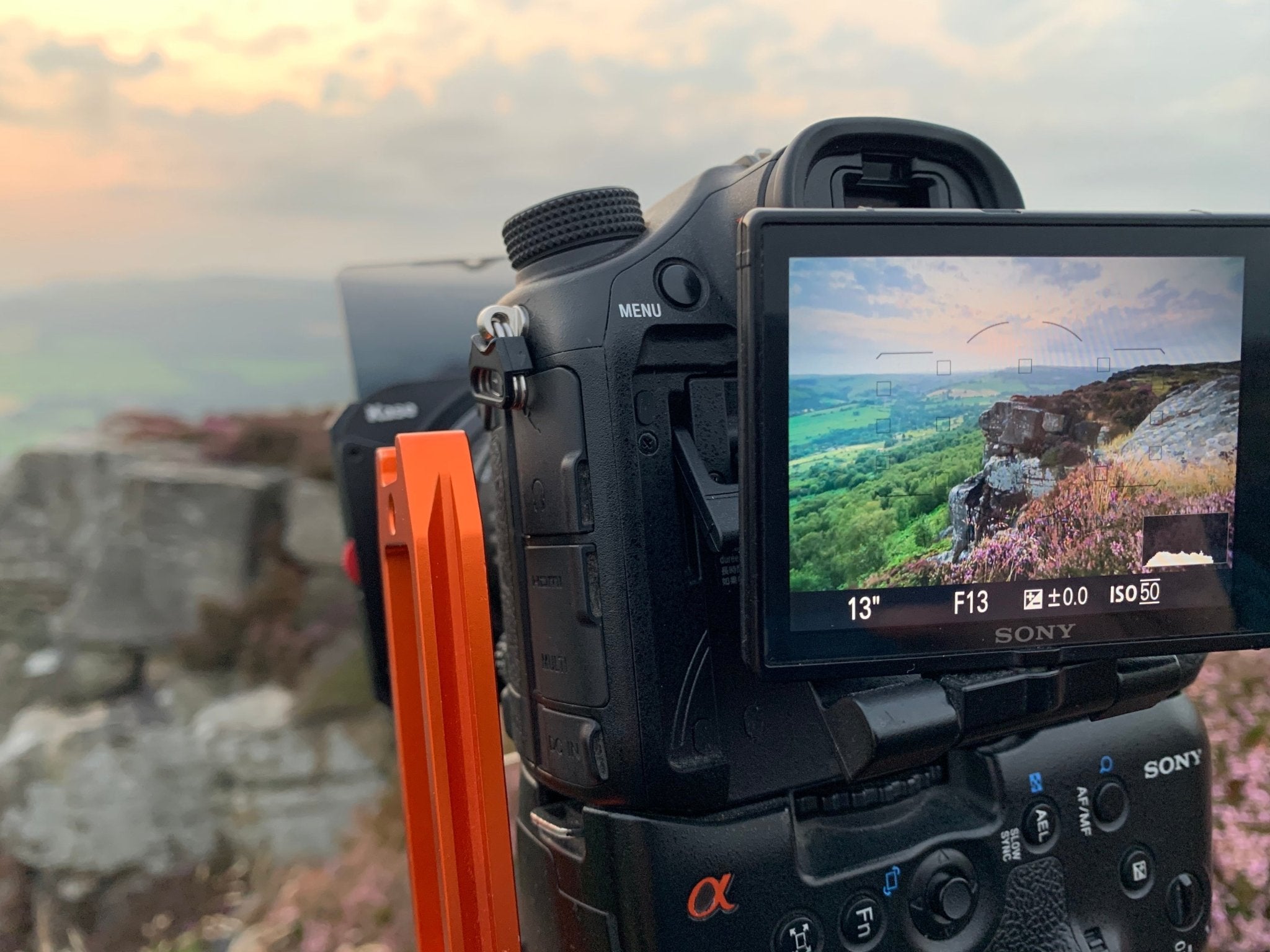The Benefits of Mirrorless Cameras for Photographers
Mirrorless cameras have made a significant impact on the photography world. As more photographers shift away from traditional DSLRs, it's essential to understand the benefits of these innovative devices. This article aims to provide you with valuable information on the advantages of mirrorless cameras for photographers, from their compact design to their exceptional performance.
Mirrorless vs DSLR
Before we dive into the benefits of mirrorless cameras, let's briefly compare them to their DSLR counterparts. DSLRs utilise a mirror system to direct light from the lens to the viewfinder. Mirrorless cameras, on the other hand, eliminate the need for this mirror by using an electronic viewfinder or LCD screen. This fundamental difference results in numerous advantages that we'll explore throughout this article.
Compact and Lightweight
One of the most significant benefits of mirrorless cameras is their compact and lightweight design. Without the mirror mechanism, these cameras are generally smaller and lighter than DSLRs. This makes them more portable and comfortable to use during long shoots or when travelling. A lighter camera also means less fatigue, allowing photographers to focus more on capturing stunning images.
Faster and Silent Shooting
Mirrorless cameras are known for their fast and silent shooting capabilities. Without the need for a mirror to move, they can shoot at higher frame rates, allowing photographers to capture action and fast-moving subjects more effectively. The absence of the mirror also means less noise during shooting, which is especially beneficial for wildlife, event, and street photography, where discretion is vital.
Improved Autofocus
Mirrorless cameras have significantly improved autofocus systems compared to their DSLR counterparts. With the use of on-sensor phase-detection autofocus, these cameras can focus faster and more accurately, even in low-light situations. This results in sharper images and an overall better shooting experience for photographers.
Electronic Viewfinder (EVF)
Electronic viewfinders are another advantage of mirrorless cameras. They provide a real-time preview of the image with exposure, white balance, and other settings applied, making it easier for photographers to visualise the final result before pressing the shutter button. EVFs also offer features like focus peaking and zebra stripes, which aid in achieving precise focus and exposure.
Video Capabilities
Mirrorless cameras excel in their video capabilities. They often provide better video quality, higher frame rates, and more advanced features than DSLRs. This makes them an excellent choice for photographers who are also interested in videography or want to expand their creative possibilities.
Lens Selection
Although DSLRs have a more extensive lens selection, mirrorless cameras are quickly catching up. Many manufacturers are producing high-quality lenses specifically for mirrorless systems, ensuring photographers have access to the best glass for their needs. Additionally, mirrorless cameras can often adapt DSLR lenses with the use of adapters, further expanding the available lens options.
Customisation Options
Mirrorless cameras offer a high degree of customisation options, allowing photographers to tailor their devices to their unique shooting preferences. With customisable buttons, dials, and touchscreens, mirrorless cameras provide quick access to essential settings, resulting in a more efficient and personalised shooting experience.
Battery Life
While mirrorless cameras have historically had shorter battery life compared to DSLRs, recent advancements have significantly improved this aspect. Newer mirrorless models offer battery life comparable to that of DSLRs, ensuring photographers can shoot all day without worrying about running out of power.
Adaptability
The adaptability of mirrorless cameras is another key advantage. Photographers can use various adapters to attach lenses from different systems, including vintage lenses or those designed for DSLRs. This adaptability allows for creative experimentation and increased versatility in a photographer's kit.
Continuous Shooting
Mirrorless cameras excel at continuous shooting, with some models capable of shooting at speeds up to 20 frames per second (fps) or more. This high-speed performance is particularly useful for sports, wildlife, and action photography, where capturing the perfect moment is crucial.
Future of Photography
The rapid development of mirrorless camera technology indicates that they are the future of photography. With manufacturers focusing on this market segment, we can expect more innovations and advancements in the coming years, further solidifying the benefits of mirrorless cameras for photographers.
In conclusion, mirrorless cameras offer photographers numerous benefits, including a compact and lightweight design, fast and silent shooting, improved autofocus, and superior video capabilities. Their adaptability, customisation options, and continuous shooting capabilities make them an excellent choice for photographers of all levels. As technology continues to advance, mirrorless cameras are shaping the future of photography and providing photographers with powerful tools to create stunning images.
FAQs
-
Are mirrorless cameras suitable for beginners? Yes, mirrorless cameras are an excellent choice for beginners due to their user-friendly design, customisable options, and lightweight build. They also offer a great platform for learning and growing as a photographer.
-
Can mirrorless cameras use DSLR lenses? Yes, mirrorless cameras can often use DSLR lenses with the help of adapters. This allows photographers to utilise their existing lens collections or explore a wider variety of lens options.
-
Do mirrorless cameras perform well in low-light situations? Mirrorless cameras typically perform well in low-light situations due to their improved autofocus systems and electronic viewfinders, which provide a real-time preview of the image, including exposure settings.
-
Are mirrorless cameras more expensive than DSLRs? Mirrorless cameras can range in price from affordable entry-level models to high-end professional devices. While some mirrorless cameras can be more expensive than DSLRs, there are options available for various budgets.
-
Is a mirrorless camera suitable for professional photography? Absolutely. Many professional photographers have made the switch to mirrorless cameras due to their numerous advantages, including advanced features, high-quality image capture, highest megapixel camera, and adaptability.
Additional Benefits and Considerations
Ease of Use for Beginners and Professionals Alike
Mirrorless cameras are designed to be user-friendly and straightforward to operate, making them an attractive option for both beginners and experienced photographers. Their intuitive interfaces and customizable settings provide a smooth learning curve for newcomers, while their advanced features offer plenty of creative possibilities for seasoned professionals.
Firmware Updates
Many mirrorless camera manufacturers frequently release firmware updates that enhance the camera's performance and introduce new features. This means that your camera can continue to evolve and improve over time, ensuring you get the most out of your investment.
Image Stabilization
Image stabilization is another area where mirrorless cameras excel. Many models offer in-body image stabilization (IBIS), which compensates for camera shake during handheld shooting. This feature is particularly valuable for low-light photography or when using telephoto lenses, as it allows photographers to achieve sharp, blur-free images even at slower shutter speeds.
Weather-Sealing and Durability
While not all mirrorless cameras are weather-sealed, many higher-end models offer this feature, providing protection against dust, moisture, and cold temperatures. This durability ensures that photographers can confidently use their cameras in various environments without worrying about potential damage.
Live Histograms and Focus Assist Tools
Mirrorless cameras often include live histograms, focus peaking, and other focus assist tools that make it easier for photographers to achieve optimal exposure and sharpness in their images. These features can be particularly beneficial for landscape, macro, and portrait photography, where precise focus and exposure are essential.
The benefits of mirrorless cameras for photographers are extensive and continue to grow as technology advances. From their compact design and versatile features to their adaptability and ease of use, mirrorless cameras are an excellent choice for photographers of all skill levels. With the ongoing development and innovation in this market segment, mirrorless cameras are poised to remain a dominant force in the photography world for years to come.
Latest Product Reviews
A Proud Kase UK Partner
The use of high quality glass filters for landscape photography is quite simply game changing and will improve your resulting images. I am happy to talk filters and help you get started, start a conversation here









